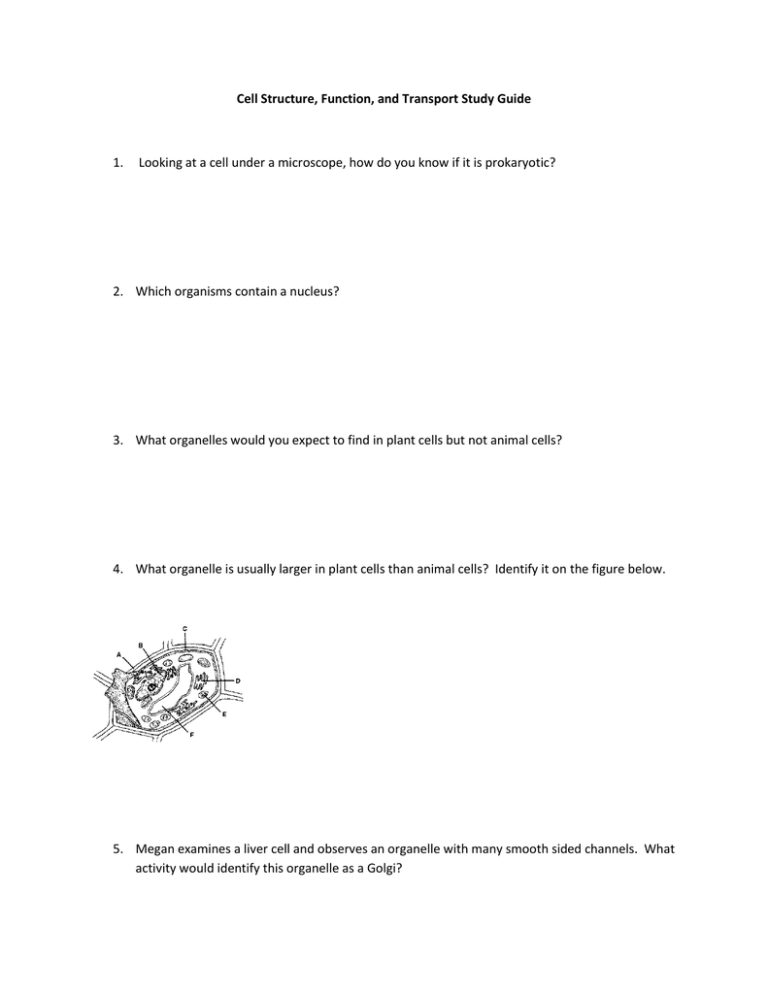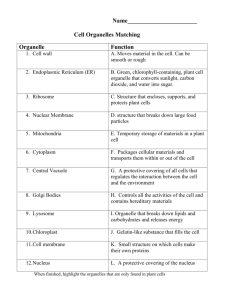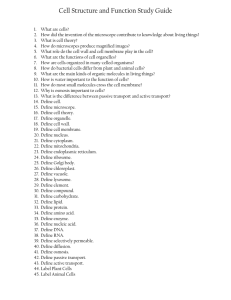Unit Study Guide
advertisement

Cell Structure, Function, and Transport Study Guide 1. Looking at a cell under a microscope, how do you know if it is prokaryotic? 2. Which organisms contain a nucleus? 3. What organelles would you expect to find in plant cells but not animal cells? 4. What organelle is usually larger in plant cells than animal cells? Identify it on the figure below. 5. Megan examines a liver cell and observes an organelle with many smooth sided channels. What activity would identify this organelle as a Golgi? 6. What are the functions of the nucleus? 7. Which structure makes proteins using coded instructions that come from the nucleus? 8. Which organelle converts the chemical energy stored in food into compounds that are not more convenient for the cell to use? 9. Which organelles help provide cells with energy? 10. What are the functions of the cytoskeleton? 11. What is the main function of a cell wall? 12. Unlike the smooth endoplasmic reticulum, what is attached to the rough endoplasmic reticulum? 13. What structures carry out cell movement? 14. What are the functions of the cell membrane? 15. The cell membrane contains channels and pumps that help move materials from one side to the other. What are the channels and pumps made of? 16. When the concentration of molecules on both sides of a membrane is the same, what will happen to the molecules? 17. What would happen if the cell membrane became impermeable? 18. Diffusion is the movement of molecules in what direction? 19. Which means of particle transport requires energy input from the cell? 20. The diffusion of water across a selectively permeable membrane is called what? 21. An animal cell that is surrounded by fresh water will burst because the osmotic pressure causes what to happen within the cell? 22. Molecules tend to move from an area where they are more concentrated to an area where they are less concentrated by which process? 23. Large molecules such as glucose that cannot cross the lipid bilayer can still move across the membrane with a concentration gradient by which means? 24. A hypertonic salt solution has a higher concentration of solutes than a blood cell. Explain what happens when a blood cell is placed in a hypertonic salt solution. 25. The diagram shows a cell membrane composed of a phospholipid bilayer with a channel protein. Each X represents the same type of molecule inside or outside the cell. Facilitated diffusion moves these molecules back and forth across the cell membrane in what direction? 26.








